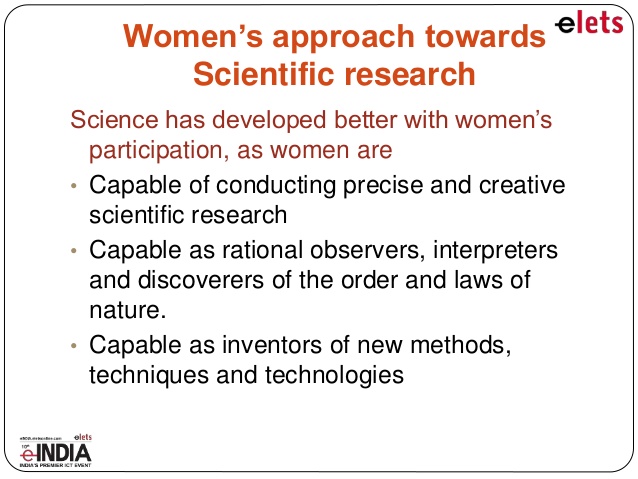Role of women and women’s organization
Relevance: Sociology: Systems of Kinship; Social Change in Modern Society; Industrialization and Urbanization in India; Challenges of Social Transformation. & G.S paper I: Society: Role of women and women’s organization.
Context:
- A rapidly growing India requires a highly skilled technical workforce that is crucial for developing a knowledge economy.
• Unfortunately, half the scientific potential of India—women in science—is squandered.
• Women make up only 14% of the 280,000 scientists, engineers, and technologists in research and development institutions across the country, according to a recent study.
• Today, fewer women apply for or hold key scientific positions as several barriers prevent them from progressing in their careers, in comparison with their male counterparts.
Assessment of the performance management for organisations:
- Performance assessment is now an integral part of an organization’s performance management systems, implemented as companies move away from the age-old concepts of training and skill development.
• Mentors often help build confidence as well as professional identity in protégés and offer access to developmental opportunities, allowing individuals to demonstrate their ability and gain trust.
• Mentors keep information channels open and provide feedback on performance in crucial times. It has been noted that almost every successful woman has had a mentor at some time.
Barriers for an women employee in workplace:
- Organizations often define success by the willingness of their employee to work for long hours and prioritize work over everything else—a “live to work” ideal, generally regarded as more masculine.
• When women feel selected or assessed on the basis of group membership rather than their work record and abilities, they experience gender discrimination.
• Women feel that an unempathetic culture is one of the most significant barriers to their advancement.
• A study highlighted that only 3% of women surveyed regarded family responsibilities as their most serious career obstacle, while 50% cited gender bias.
• Only 7% of female employees surveyed reported leaving the organization for family reasons, whereas 73% reported leaving because they saw limited opportunities.
• The quit rates for women were significantly lower in organizations that provided better training and promotion opportunities.
Barriers between balancing work and family life:
- An increase in the number of women with children who participate in the country’s paid workforce.
• An organization’s culture has a significant impact on those who work within it.
• Not many organizations have revised their work policies or employee expectations to enable women to strike a balance between their work and family responsibilities.
• The internet and telecom revolutions have enabled organizations to introduce employee-friendly policies such as flexi-work hours and work-from-home that have significantly transformed workplace practices.
• Women often take on part-time roles that pay less, or are seen as less important, in order to accommodate work and family.
• Family commitments can influence the way co-workers, including managers, perceive them.
• Even when organizations address these concerns with employee-centric policies, women fear a personal disadvantage or a possible career penalty if they avail them.
• The difficulty women have combining paid work with the primary responsibility for dependent care is interpreted by some as a lack of women’s commitment to paid work.
Way ahead:
- Science needs the best scientists, and a knowledge economy needs a gender-balanced workforce. This can only be attained by realizing the full potential of women.
• Apart from being wasteful and unjust, the under-representation of women in science threatens the goal of achieving excellence in the field.
• To tackle this, we must set an ambitious target of reaching out to 1 million young girls each year, and encourage them to take up science and make a difference.
• A national convention of women in science must be held annually, with a specific focus on discussing and building general awareness around the major challenges that women face.
Conclusion:
- We must mobilize all our resources, if India aims to be a $5 trillion economy.
• The gender imbalance in science and technology is a looming challenge and threatens to weaken our country’s competitive economic position.
• By addressing these concerns, we can empower and motivate more women to join scientific fields, unlock India’s full potential, and develop the country to become a knowledge economy.
For more such notes, Articles, News & Views Join our Telegram Channel.
Click the link below to see the details about the UPSC –Civils courses offered by Triumph IAS. https://triumphias.com/pages-all-courses.php


